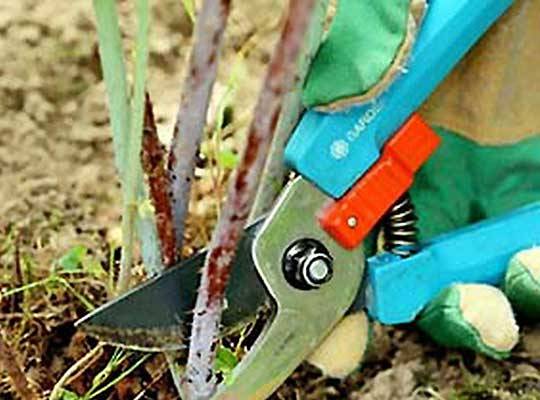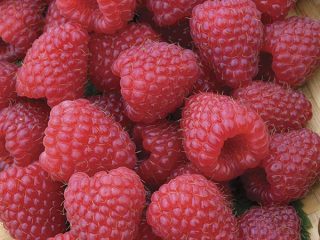Content
Raspberries have been grown for a long time. People are attracted not only by the taste, but also by the beneficial properties of the berries, leaves and twigs of the plant. Breeders from many countries, including Russia, pay great attention to this shrub. Every year new raspberry varieties appear with improved biological and taste properties.
Raspberry Gusar is the creation of domestic breeders from the Bryansk region. Despite the fact that the variety is relatively young, it has many fans among gardeners. Why exactly the berries of this variety are loved, the features of growing and caring for the plant - all this will be discussed in the article.
A little history
Gardeners learned about the breeder Ivan Vasilyevich Kazakov almost half a century ago. It was he who was one of the first to engage in domestic remontant raspberries. His collection contains many varieties that are in many ways superior to other plants in terms of large fruit size and resistance to raspberry diseases and pests.
The varieties of the collection are often called “Kazak’s”. This breeder's remontant raspberries are grown not only in Russian spaces. Gardeners of the former republics of the Soviet Union are also not averse to getting seedlings of the popular raspberry.
Preference is given to many varieties, but most often they pay attention to remontant raspberries:
- Indian summer;
- Penguin;
- Runaway:
- Balm;
- Shy.
Video about Kazakov varieties:
Remontant raspberry Gusar (the name alone is worth it!) is the most in demand today. We started cultivating Gussar in 1999. This is truly a “golden variety”, distinguished by its unpretentiousness.
Kazakov managed to develop a variety that is not affected by many raspberry diseases. I took the best Russian raspberries and the American variety Canby as a basis. As a result of cross-pollination, the variety Gusar was obtained, the qualities of which are superior to its “parents”.
Description
Much about Gusar raspberries can be learned from the description of the variety and reviews from amateur gardeners.
- The shrub grows up to 2.7 meters. The shoots are brown, erect, spreading bush. Powerful shoots with a waxy coating without pubescence do not need to be supported in the second year if their height is less than 180 cm.
- The root system does not form many roots. Therefore, a large number of root shoots are not formed, most often from 8 to 10.
- There are few thorns, they are mainly located on the Gusar raspberry in the lower part. The spines are purple and quite sharp.
- The leaves are dark green with wavy edges. The wrinkled leaves are not curled and do not droop downwards.
- Large berries of rich red color, dark ruby when fully ripe. They stand out for their unusual shape: the berry is long and the tip is blunt. The weight of the sweet and sour berry is up to 4 grams. The pulp is dense, the berries practically do not fall off.
- Not subject to rotting. They are distinguished by their aroma and unsurpassed taste.
Brief description of the variety in the photo.
Advantages of the variety
The remontant raspberry variety Gusar has a medium-early ripening period and is rightfully considered one of the best berry bushes.
What are its advantages:
- Unpretentiousness. No special knowledge is required to get a rich harvest. Even beginners can do this.
- The variety is productive. If you follow agrotechnical standards, one bush can ripen up to 6 kg of aromatic berries. Under favorable conditions, you can harvest up to 120 kg per hundred square meters.
- Malina Gusar manages to reach technical maturity in any region of Russia, even under unfavorable climatic conditions.
- A universal-purpose variety, suitable for preparing raspberry compotes, preserves, and jams.
- Due to its excellent presentation and the ability to be transported over any distance without much loss, this remontant variety is grown on an industrial scale.
Gusar berries differ in their chemical composition:
- fructose and glucose not less than 10.9%;
- organic acids up to 1.8%;
- ascorbic acid is about 27.4 mg/%.
Disadvantages of the variety
In addition to its advantages, the variety also has disadvantages:
- Due to the power of the bushes, the plant needs to be given a lot of space on the site, taking into account that there should be from 80 to 100 cm between plants, and up to one and a half meters between rows.
- At a height above 1.8 meters, the raspberries will have to be tied to trellises, with each shoot in three places. This will help the plants withstand the winds and not lose berries.
- Winter-hardy raspberries Gusar easily cope with frosts because they are covered. And in the spring, when warmth gives way to frost, plants may die due to icing of the roots. Most often, as gardeners write in reviews, Gusar raspberry bushes planted in the fall do not survive in the spring.
But despite some shortcomings, gardeners prefer the young variety of remontant red raspberries Gussar.
Features of agricultural technology
Due to the unpretentiousness of Gusar raspberries, novice gardeners can successfully grow them if they take into account agricultural technology.
Selecting a location
When choosing a place to plant rows of Gusar raspberries, preference should be given to well-lit areas with fertile soil. But this does not mean that you won’t have to feed the plants. Most often, gardeners use organic, mineral fertilizers and wood ash.
Bush inspection
In the spring, after the raspberry bushes of the Gusar variety have been opened, buds begin to appear on them. It is necessary to inspect each shoot. If there is damage or the buds do not swell, they need to be cut out.
Pruning rules
When the buds begin to bloom, the fruiting shoots are cut off by 10-15 centimeters. The emerging offspring are subjected to the same procedure at the end of May. The strongest shoots are left on each shoot, the rest are cut out. This is necessary so that the fruiting shoots and raspberry shoots have enough nutrition and moisture for development and flowering.
The next pruning is carried out in June, when the shoots reach one and a half meters. The Gussar variety is shortened to a meter. Raspberries are pruned for the last time at the end of July, shortening the side shoots.
Watering and fertilizing
Raspberry bushes are demanding of moisture, since their wild relatives grow near water. Watering should be plentiful, especially if there has been no rain for a long time. But not until the soil becomes swampy, otherwise the roots will rot.
To retain moisture longer, the soil in the garden bed is mulched with humus or compost. It will be great if wood ash is added. Thus, the plants receive additional nutrition, which contributes to better development of the bushes and ripening of the crop.
Reproduction
Many novice gardeners are interested in the question of how to plant Gusar raspberries.
Cuttings
Like most varieties, Gusar can be propagated by cuttings. It is best to use young offspring that do not have their own roots.
Cuttings from Gusar raspberry varieties are harvested when the shoots are 3 cm high and have three leaves. After cutting, they need to be tied into a bundle, treated with any growth stimulant and placed in a nutrient medium. To do this, mix peat, soil and humus. To prevent the cuttings from dying, the substrate must always be moist.
As a rule, the root system is formed in 2-3 weeks. After another two weeks, the cuttings of the Gusar variety are ready for planting in a permanent place. It is better to plant in cloudy weather. The plants are shaded for several days. By the end of summer, raspberries grow up to one and a half meters.
Seedlings
The Gusar raspberry variety is planted with seedlings. You just need to purchase them from reliable suppliers so as not to run into low-quality planting material. Most often, this is why negative reviews from gardeners appear.
Seedlings of the Gusar variety are grown from the end of May to June. Prepare large holes - 40x50 cm, add fertile soil and wood ash.When planting, the material is not buried; the root bud should be above the surface. At first, the seedlings need to be watered abundantly and often.
For better rooting of Gusar varietal raspberries, the surface around the plant is mulched with peat and humus. Some gardeners use sawdust, but only from deciduous trees.

















Elena, work on the garden will soon begin again. I came across the comments and read them carefully. And then it dawned on me. There is a disease in raspberries "Witch's broom". when a planted seedling suddenly has numerous trees climbing out of its trunk circle. too thin to count. frail shoots. The bush must be uprooted and destroyed. You are describing. that your bushes have some kind of wild growth. After all, I occasionally encountered this problem.
Many years ago, all over gardening, raspberries suddenly became ill. the berries that had set began to swell and ripen. but then they wrinkled. generally berries. We didn’t collect as such. There was no Internet. few.what we knew. The raspberries were uprooted in the fall. In the spring they dug up, carefully selecting the remaining roots. all summer then watching. to remove sprouts. In the spring we brought shoots of Barnaul raspberries. from my daughter who lives five hours away from us. They planted it in the same place and the raspberries grew. and the berries are not measured. Therefore. I don’t adhere to the fact that you can’t plant raspberries in their old place. This summer, the replacement shoots that have grown from Gusar are very powerful and durable, and next summer it will be possible to find out all the qualities and disadvantages of the variety.
Nailya, I took the “Gussar” seedlings in the Vladimir region, and also in the nursery, never set foot there again, this Hussar, if it’s him, has been sitting with me for 4 years now, and I haven’t even picked a handful of berries from it, 2 will appear. 3 and they look like some kind of drupe, so small, although I fed it, it was of no use, I planted it according to all the rules, as it should, according to the description it is very similar to the variety, but the feeling, if this happens, of course, is that it is some kind of wild growth , I just ruined a place at the dacha, I wanted to try to plant a different species, a remontant one, but in one of the articles I read that it’s not worth planting another variety in this place at all, in 5 years only you can, so you don’t know where the real one is buy the variety if the nurseries are already deceiving...
Autumn planting of seedlings is not advisable. write above. and I live in Altai and planted 5 pieces. Gusar October 21. will be 2 years old. We overwintered perfectly. I will try the berries this summer. They write that it practically does not produce shoots. but I can’t say that because...there are plenty of them. I'm in doubt. or maybe I bought it from the Omsk nursery. The seedlings had labels with details. If so . then again it’s a deception. I've been waiting for so long. and the result is zero. I want to hope for the best. The seedlings were planted along a line. the distance between them is 70 cm.